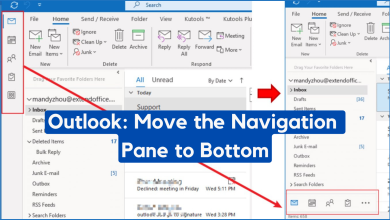How to Fix the Modified Permissions Cannot Be Saved in Outlook?
Outlook cannot save modified permissions mainly due to delegate access stuck in operation. Also, ISPs’ network restrictions and conflicting add-ins can also cause the error. This error does not let the user modify the calendar’s permissions and share the calendar with other users.
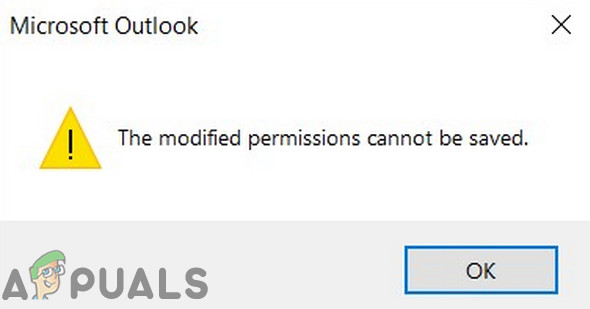
This is a very common problem that occurs because of small technicalities with the Outlook application. This problem doesn’t signify any problem with the hardware itself. Make sure that you have your Outlook credentials with you before proceeding as they will be required.
In a case where the delegated access feature cannot propagate changes to the server (or is stuck in operation) and the user edits permissions in the calendar during this time, Outlook will be forced not to save the modified permissions.
Sometimes a Calendar’s owner, although unintentionally, creates duplicate entries in Calendar’s permission which results in more than one permission scenario to a single user. In that case, Outlook will not be able to save the modified permissions.
To safeguard and control the web traffic, ISPs deploy different techniques to restrict different network resources and features. If this imposed restriction interferes in the communication between the server and Outlook, then Outlook will not let the user modify the calendar’s permissions.
Add-ins help us in accomplishing greater functionality from Outlook but conflicting Add-ins are a common Outlook issue which can cause problems like the one under discussion.
By default, Outlook grants “send on behalf of” permission to the delegate user and if the said permission could not be written to the publicDelegates attribute to the user object of Active Directory or if the SELF-object does not have permission to change the Write Personal Information on the Active Directory, then Outlook will show the error under discussion.
Pre-Requisite
- Make sure that the user you want to add is not blocked in the admin portal of office 365.
- Please visit Service Status of Microsoft products to check if Outlook is up and running.
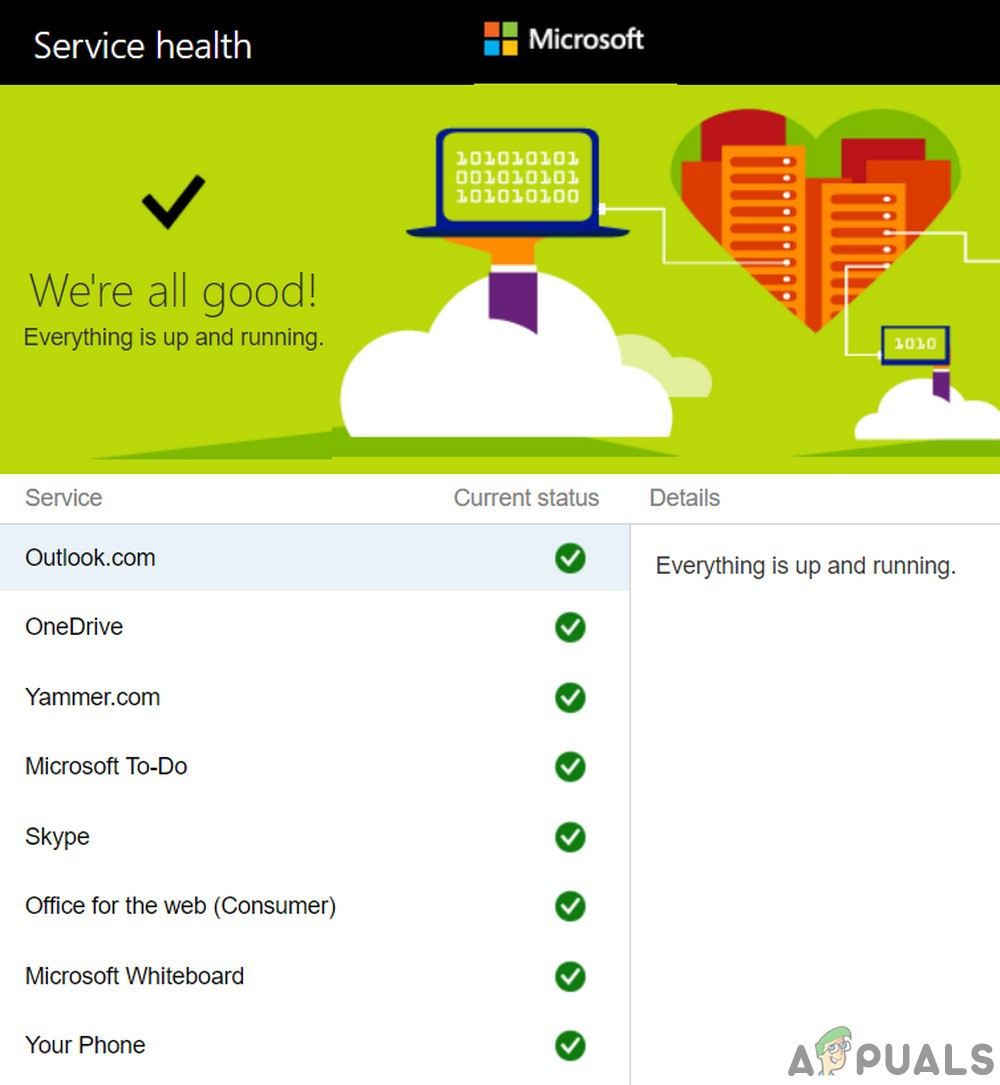
Service Status of Microsoft Services
What to do to save Modified Permissions on Outlook?
1. Delete Duplicate Entries in Calendar’s Permissions
Permission in Outlook’s Calendar properties is used to manage delegate access. If there is duplication in the permission entries, then this duplication will create conflicting permissions scenarios. Because of this, Outlook will not be able to save the modified permissions. In that case, removing the duplicate entries may solve the problem.
- Launch Outlook.
- Click on Calendar to open it.
- Then right-click on Calendar and click on Properties.
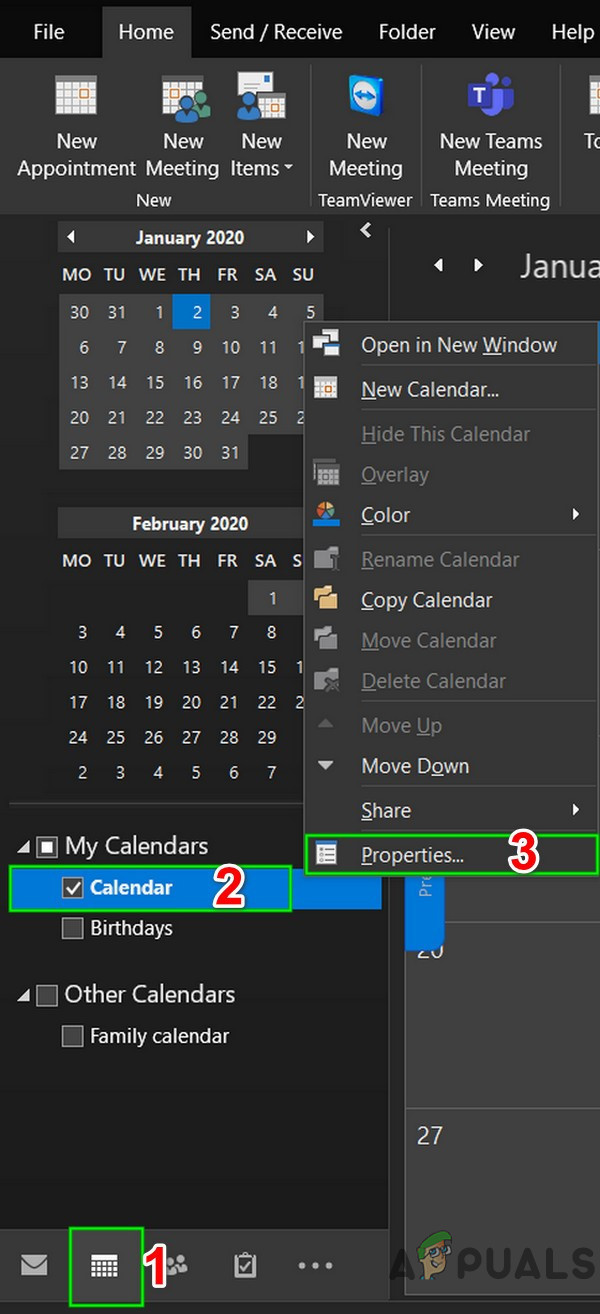
Open Calendar Properties - Then click on the Permissions tab and check if there are any duplicate entries there. If found then remove the duplicate entries. Then click on Apply and Ok.
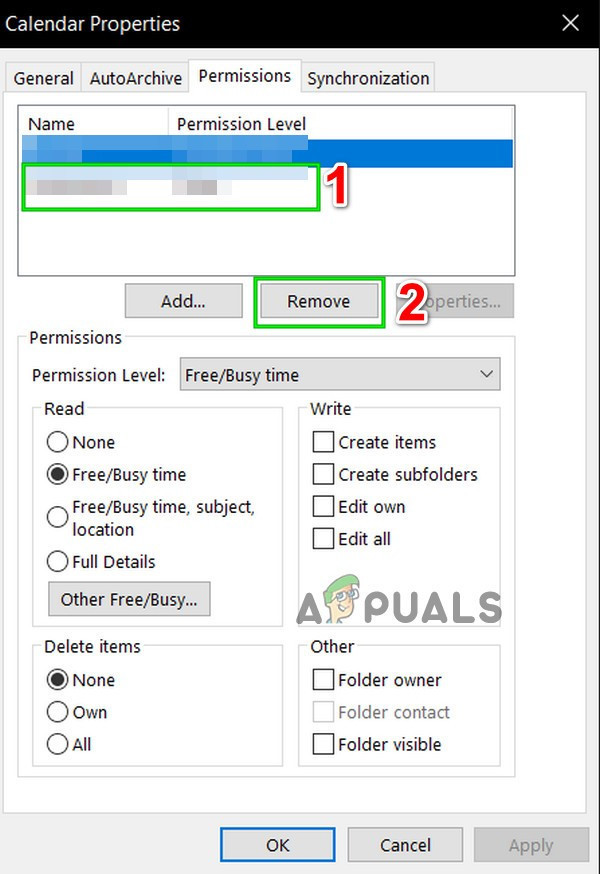
Remove Duplicate Entries From Calendar’s Properties - Relaunch Outlook and check if you can edit and save permissions in Outlook’s Calendar.
2. Change Network Connection
To keep things safe and under control, ISPs restrict access to different network services and features. If your ISP is blocking a service/feature required by Outlook to complete its operation, then Outlook may not save the modified permissions in a shared calendar. To rule out such a scenario, temporarily switch to another network and then use Outlook.
- Connect to another network. If the usage of another network is not possible, then you can use your mobile phone’s hotspot. Also, using a VPN can confirm if the ISP is using any network restrictions that are interfering in communications between Outlook and the server.
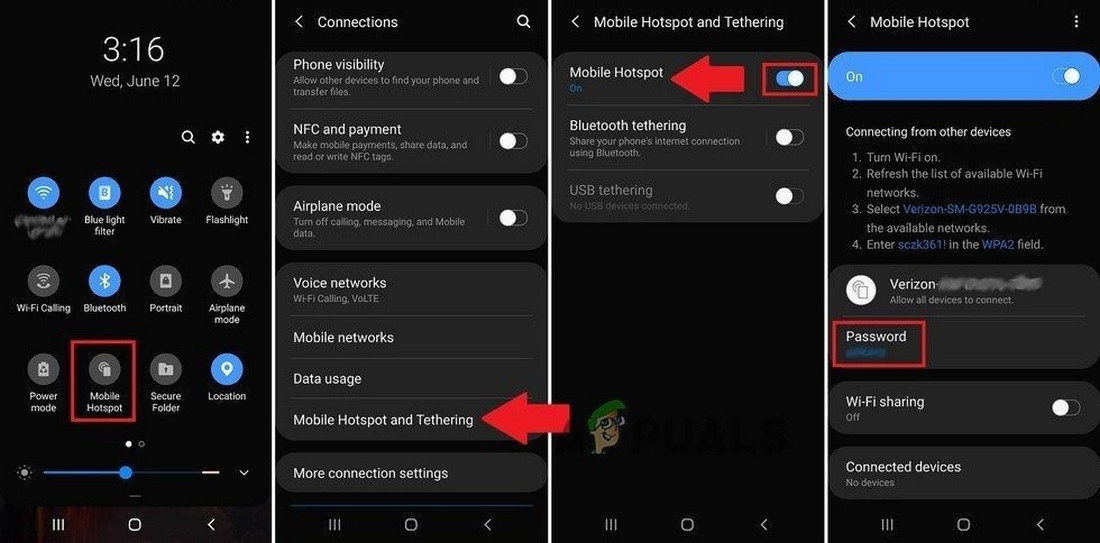
Turn On Hotspot of Your Mobile - Now Launch Outlook and check if it is functioning without any issue.
3. Perform Another Delegate Access Operation
Delegate access is used to share Outlook calendar to other users. If due to any glitch, delegated access is stuck in operation or the changes made in permissions are not communicated to the server, then the Outlook calendar will not be able to save the modified permissions. In that case, performing another delegate access operation may solve the problem.
- Launch Outlook and then go the file tab.
- Now click on Account Settings and then in the list displayed, click on Delegate Access.
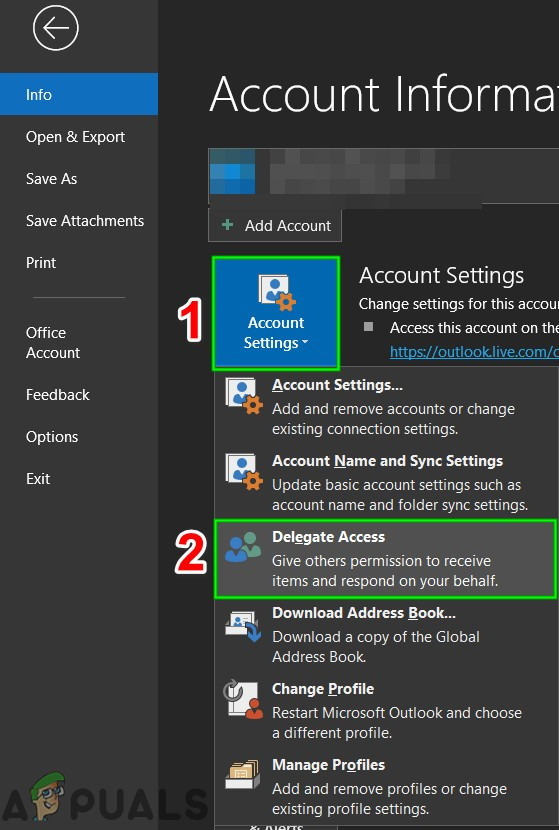
Open Delegate Access - In the Delegates window, click on Add.
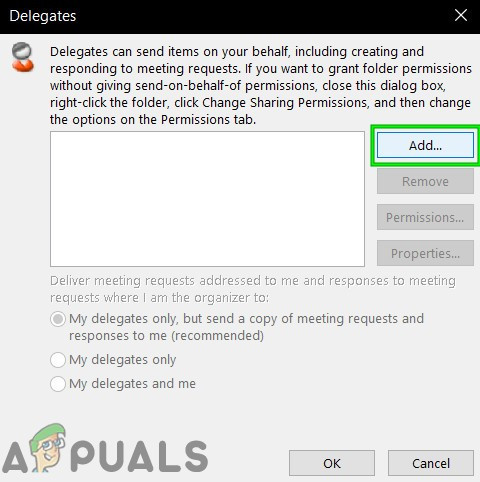
Click Add in Delegates Window - Now select any random user and click Add and then click Ok.
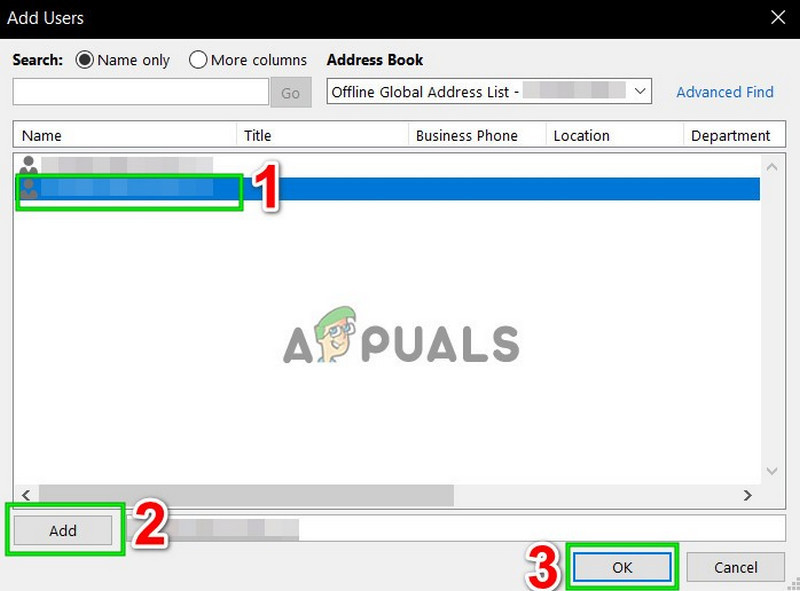
Add New Delegated User - Now in the Delegate user permissions window, select the options you want to delegate.
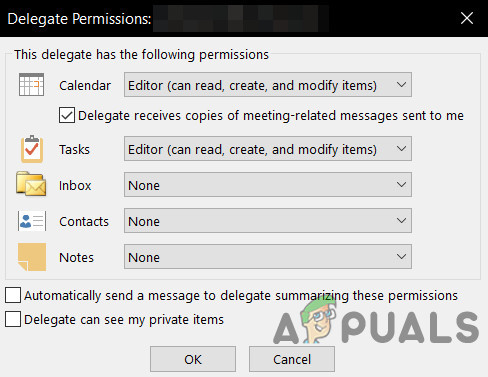
Delegate User Permissions - Click OK again.
- Restart Outlook and go to the File tab.
- Then click Account Settings and in the list displayed, click on Delegate Access.
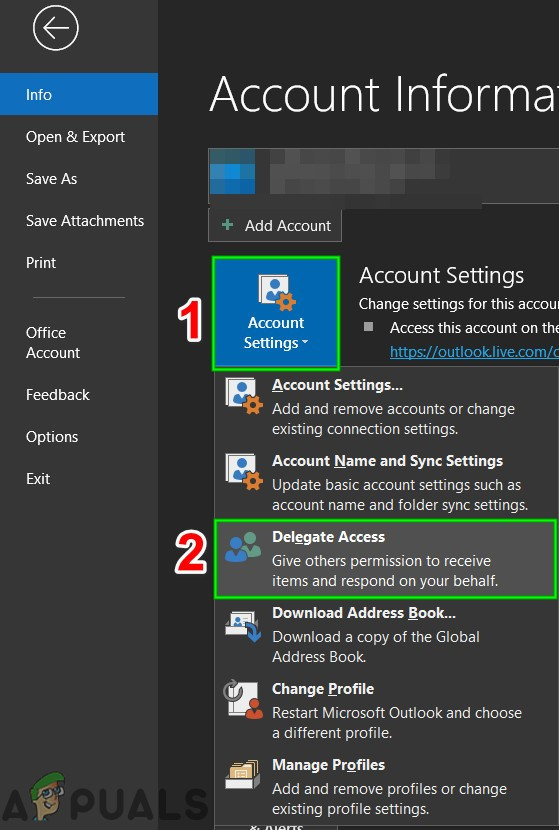
Open Delegate Access - Remove the user that you just added.
- Relaunch Outlook and check if it has started to work without any problem.
4. Open Outlook in Safe Mode and Disable Outlook Add-ins
Outlook Add-ins help you in getting things done right from the inbox. But sometimes poorly written or outdated Add-ins start interfering with the genuine operation of Outlook. We can use the built-in safe mode of Outlook in which Outlook will start without any of its add-ins. From there you can diagnose whether the problem is occuring because of add-ins or not.
- Exit Outlook.
- Press Windows+R buttons simultaneously to open Run command.
- Type the command Outlook.exe /safe (There is a space between Outlook and /) in the run command box and then click OK. If an error message pops out that Windows can’t find Outlook.exe /safe, then use the full path to Outlook.exe.
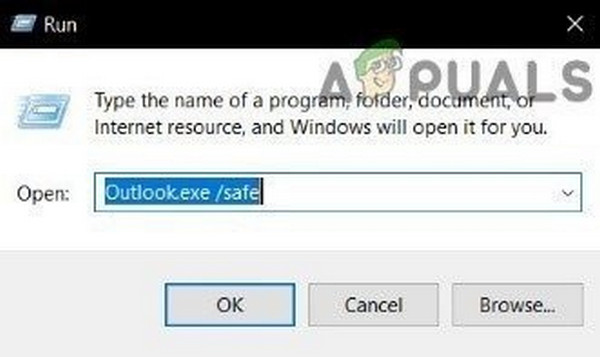
Open Outlook in Safe Mode - Now repeat solution 3 to check if you can delegate access in Outlook.
If you can use Outlook without any issue, then disable Outlook Add-ins one by one by using the following steps
- Exit Outlook and re-open Outlook in normal mode and then go to the File tab and then click on Options.
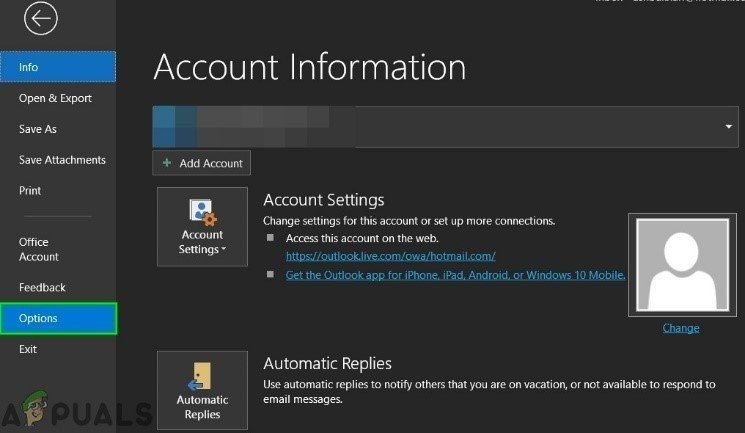
Open Outlook Options - Then click on Add-Ins.
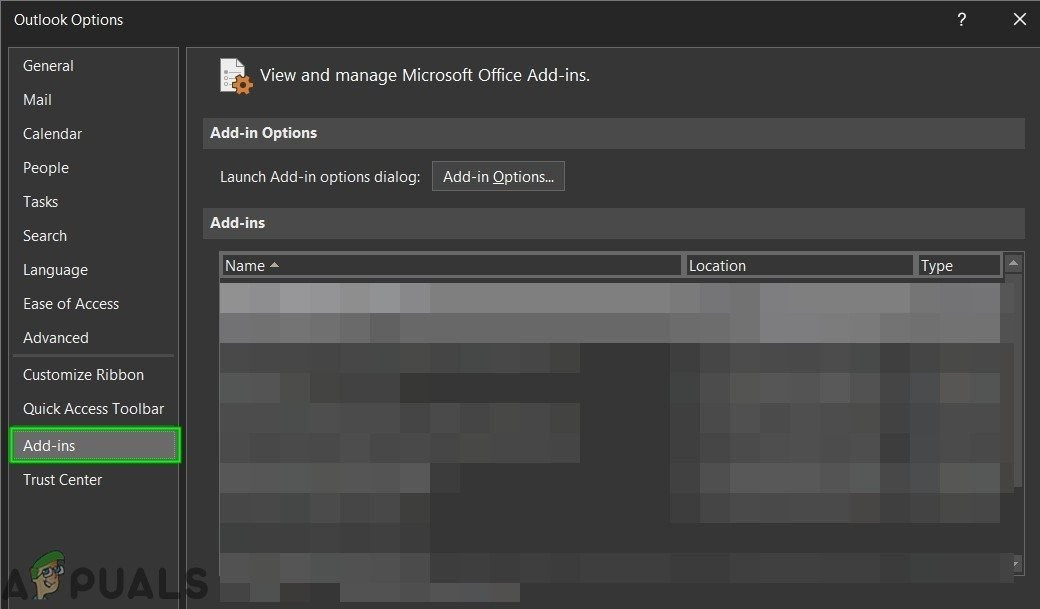
Open Add-ins in Outlook Options - Find the “Manage” option (near the bottom of the window) and select choose the type of add-ins you want to enable/disable e.g. COM Add-ins and then click on “Go”.
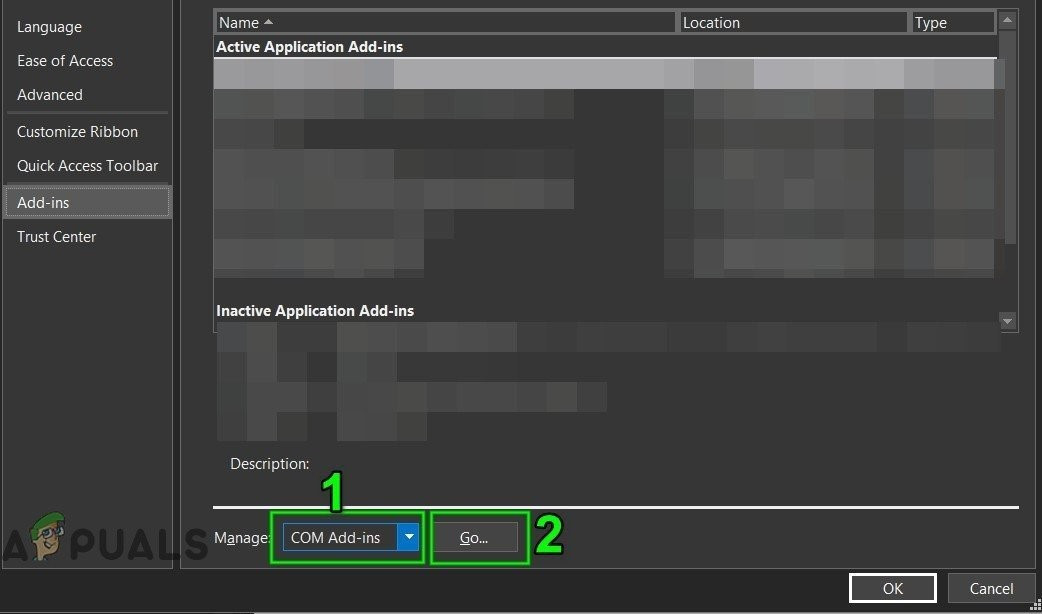
Manage Add-ins - Now uncheck all the Add-in.
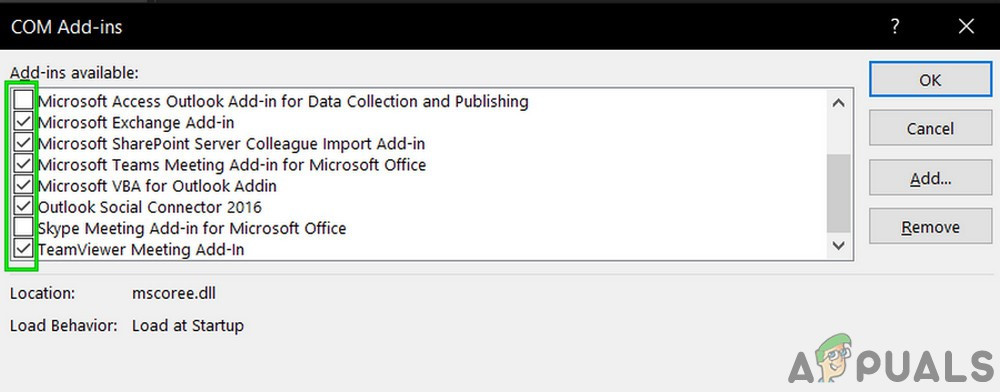
Uncheck All Outlook Add-ins - Then restart Outlook and check if you can modify Outlook’s calendar permissions, if so, then enable add-ins one by one to single out the faulty one. When the faulty add-in is found, keep it disabled and visit the faulty add-in’s developer website to check for is an updated version of the add-in. If there is an updated version available, then download and install the updated version and see if it helps in solving the problem.
5. Disable ‘Send on Behalf’ Permission Using the Registry Editor
When you give delegate access to a user, Outlook, by default, grants “send on behalf of” permission to the delegate user and the said permission is written to the publicDelegates attribute of the user object in Active Directory. If you are using Outlook with a Global Catalogue server that is not local to your domain, then publicDelegates attribute cannot be written to the user object in Active Directory or if the SELF-object cannot change the Write Personal Information on the Active Directory user object, then Outlook will not be able to save the modified calendar permissions. In that case, configuring Outlook to add delegates without grant of the “send on behalf of” permission to the delegate, may solve the problem.
Warning: Making changes in Registry needs expertise and please take extreme caution in editing registry. We suggest you do exactly as instructed below because any wrongdoings may corrupt the entire OS. Backing up registry is recommended.
- Exit Outlook.
- Press Windows key then type Registry Editor and in the resulting list click on Registry Editor.
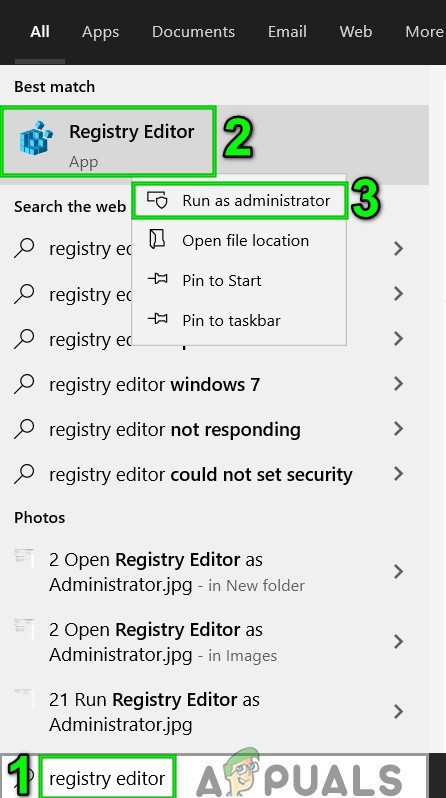
Open Registry Editor as Administrator - Then navigate to the following registry key
HKEY_CURRENT_USER\Software\Microsoft\Office\x.0\Outlook\Preferences
Replace x.0 in the above registry key with your Outlook version.
- Outlook 2016/2019: 16.0
- Outlook 2013: 15.0
- Outlook 2010: 14.0
- Outlook 2007: 12.0
- Outlook 2003: 11.0
- Then click New on the Edit menu, and then click DWORD Value.
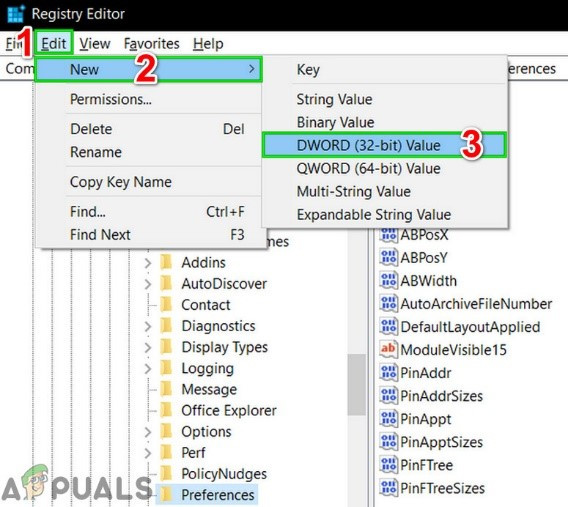
Add New DWORD Value in Registry Editor - Type IgnoreSOBError, and then press Enter.
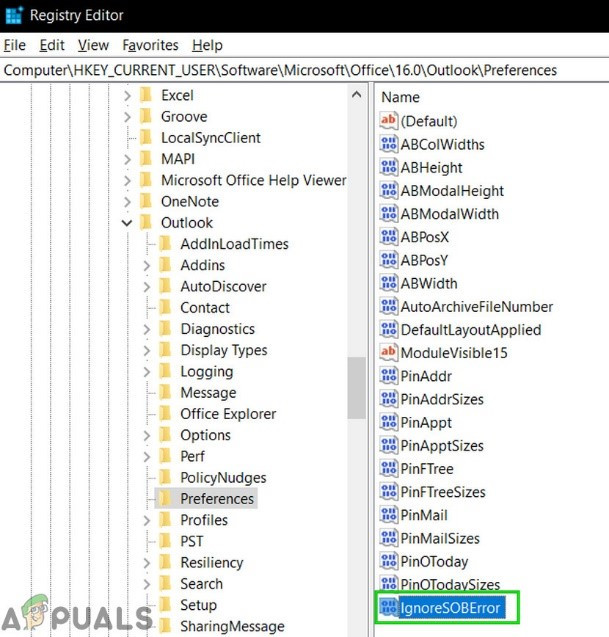
Add IgnoreSOBError in Registry - Right-click IgnoreSOBError, and then click Modify and in the Value data box, type 1, and then click OK.
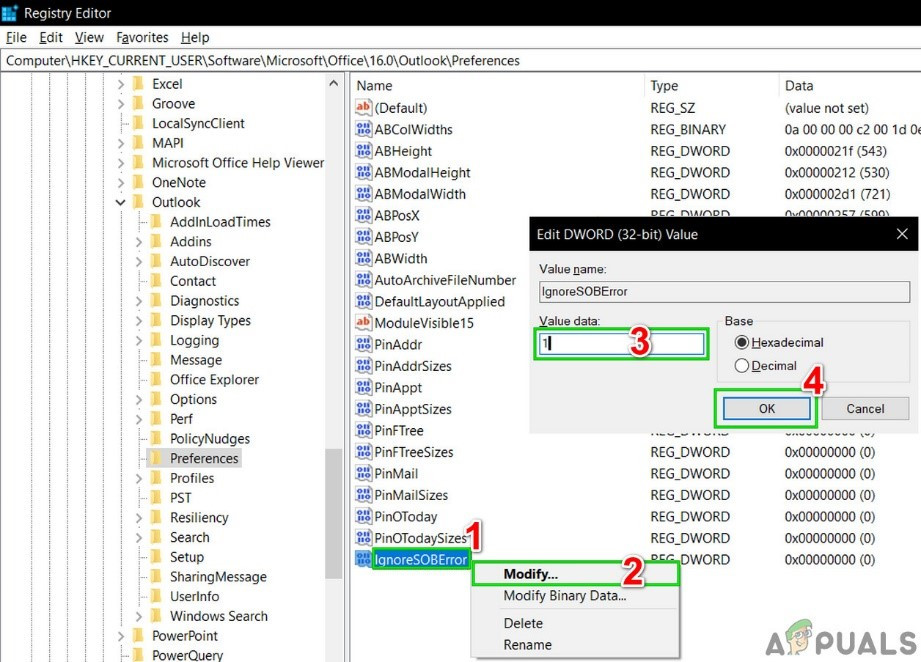
Modify IgnoreSOBError Registry Entry - Click on the File and then click Exit to exit Registry Editor.
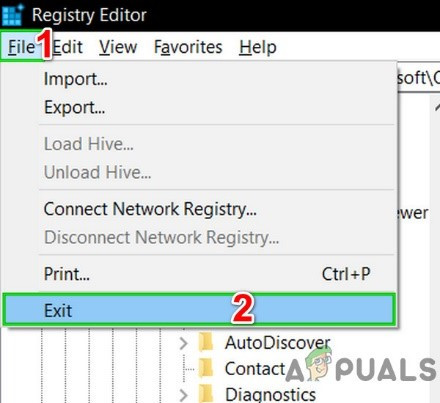
Exit Registry Editor - Now launch Outlook and check if you can add and save Calendar’s permissions.
6. Use Outlook Web App
If there is a software glitch at the server-side or in the Outlook calendar, then usually mobile clients (Outlook for iOS or Outlook for Android), Outlook web app and Windows 10 calendar app get rectification before Outlook PC client. In that case, using Outlook web app, mobile clients or windows 10 calendar app may solve the problem.
- Exit Outlook.
- Open a web browser and access the Outlook Web app. You can use a mobile client (Android or iOS) or Windows 10 calendar app.
- Click on the Calendar icon then click on three dots in front of the calendar and click on Sharing and Permissions.
- Enter the email address of the user to whom you want to share the calendar and then click on Share.
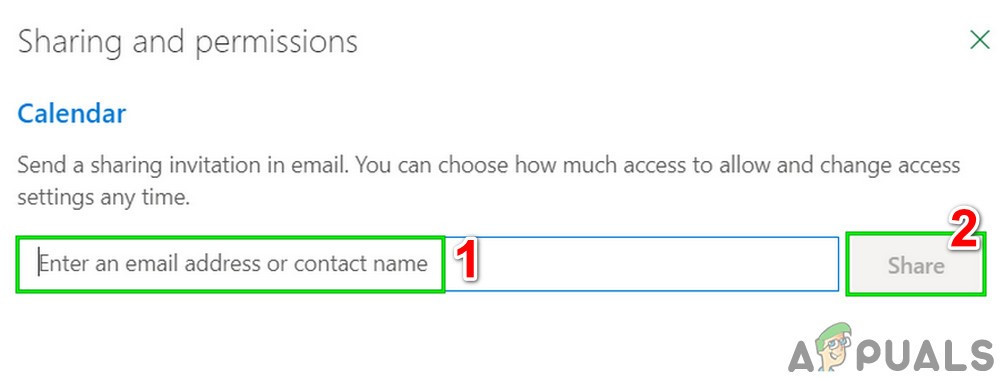
Enter Email to Share Calendar in OWA - Launch Outlook and check if you can edit and save permissions in Outlook’s Calendar.
7. Run Microsoft Support and Recovery Assistant
The Microsoft Support and Recovery Assistant uses different diagnostic tests to figure out the problem with an application and then offers the best possible solution for the problem identified. This tool can currently troubleshoot Outlook as well as Office/Office 365 issues. If the Microsoft Support and Recovery Assistant (SaRA) is not able to fix a problem, then it will suggest the next steps in troubleshooting the problem. So, running the Microsoft Support and Recovery Assistant may solve the problem.
- Download Microsoft Support and Recovery Assistant from the official Microsoft Website.
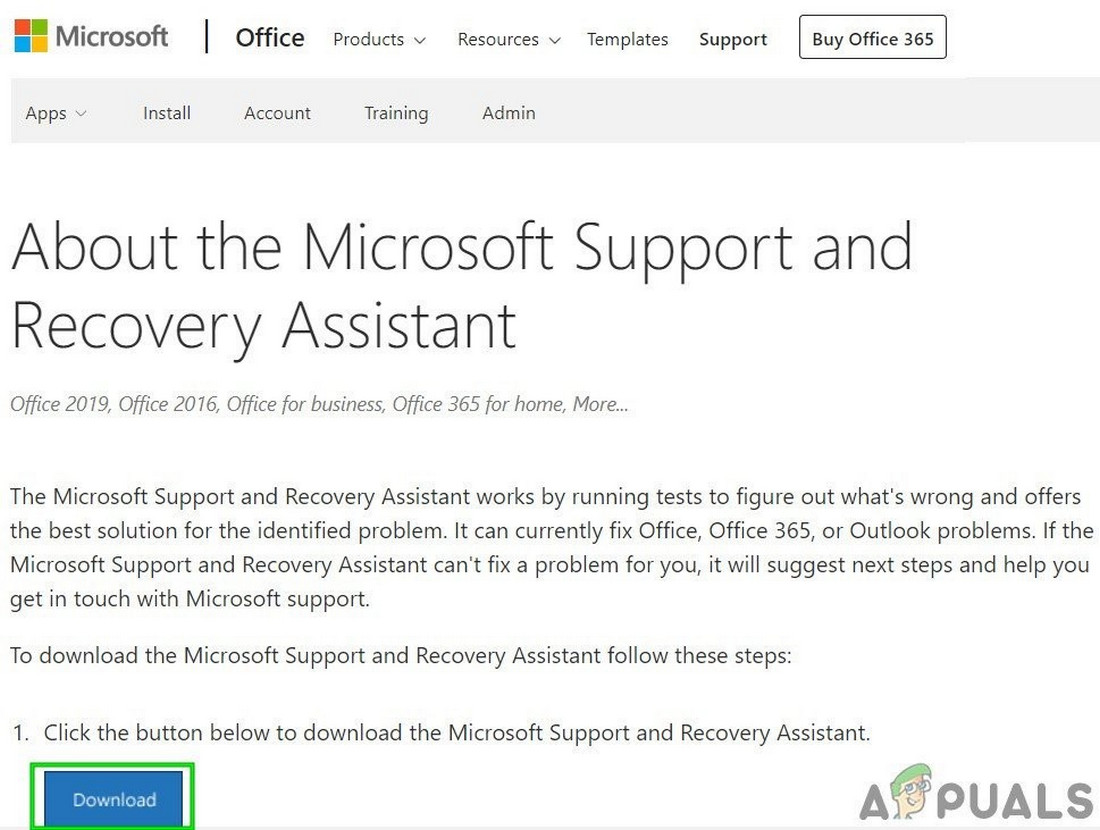
Download Microsoft Support and Recovery Assistant - When the download is complete, Launch the SaRA.
- In the Microsoft Services Agreement, click I Agree (After reading & understanding) to agree.
- In the applications select Outlook and then click Next.
- Now select “I’m having problems with shared mailboxes” option and click Next.
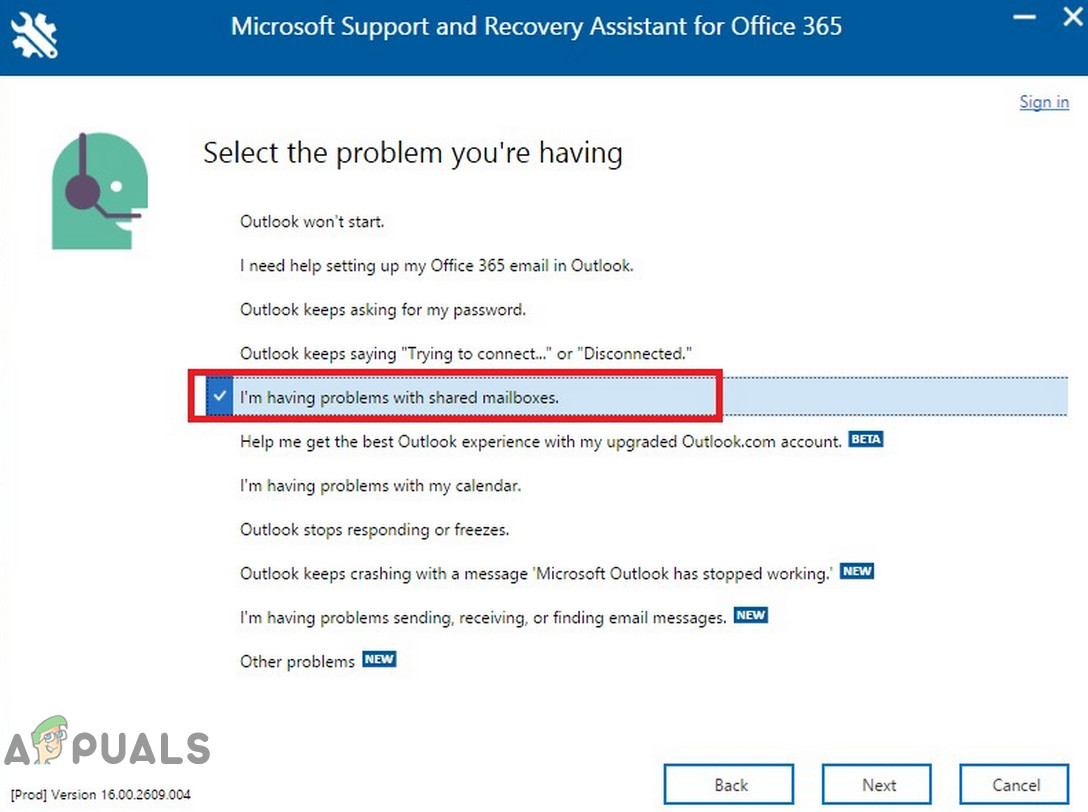
Select I’m Having Problems With Shared Mailboxes in SaRA
Follow the instructions shown on the screen by the Microsoft Support and Recovery Assistant to troubleshoot the Outlook.



